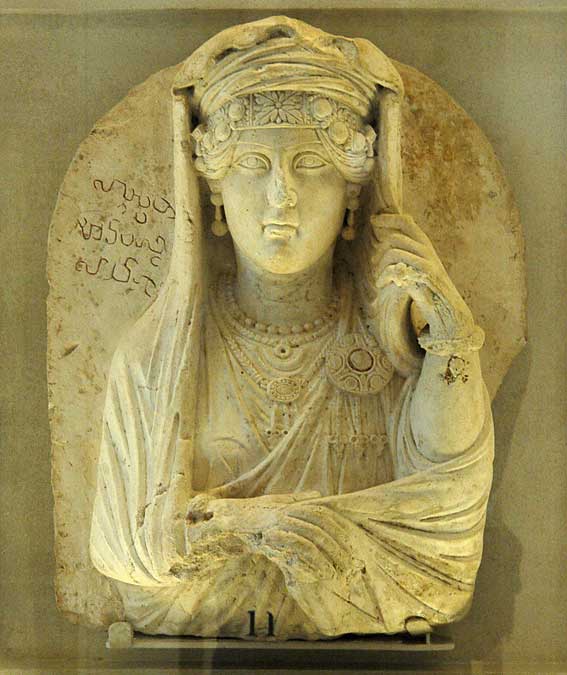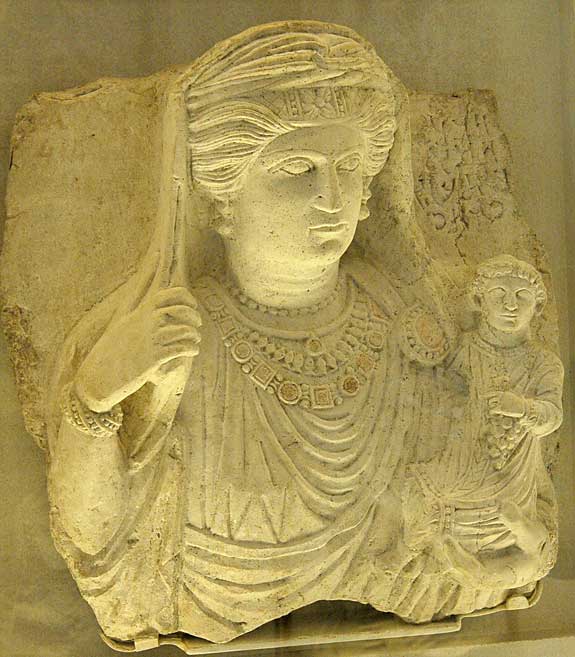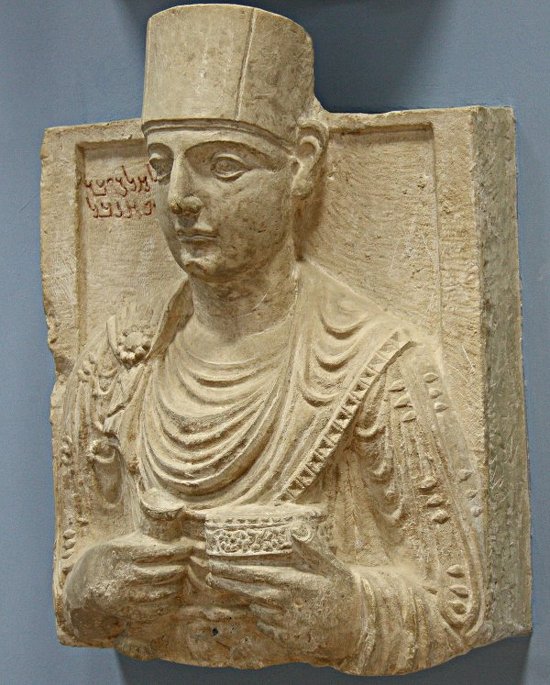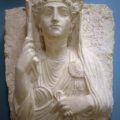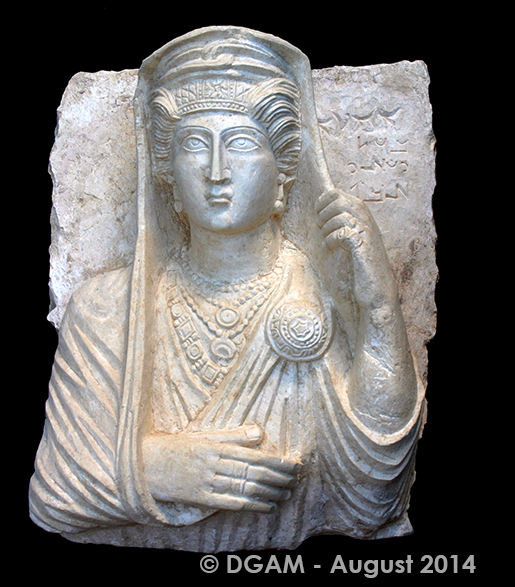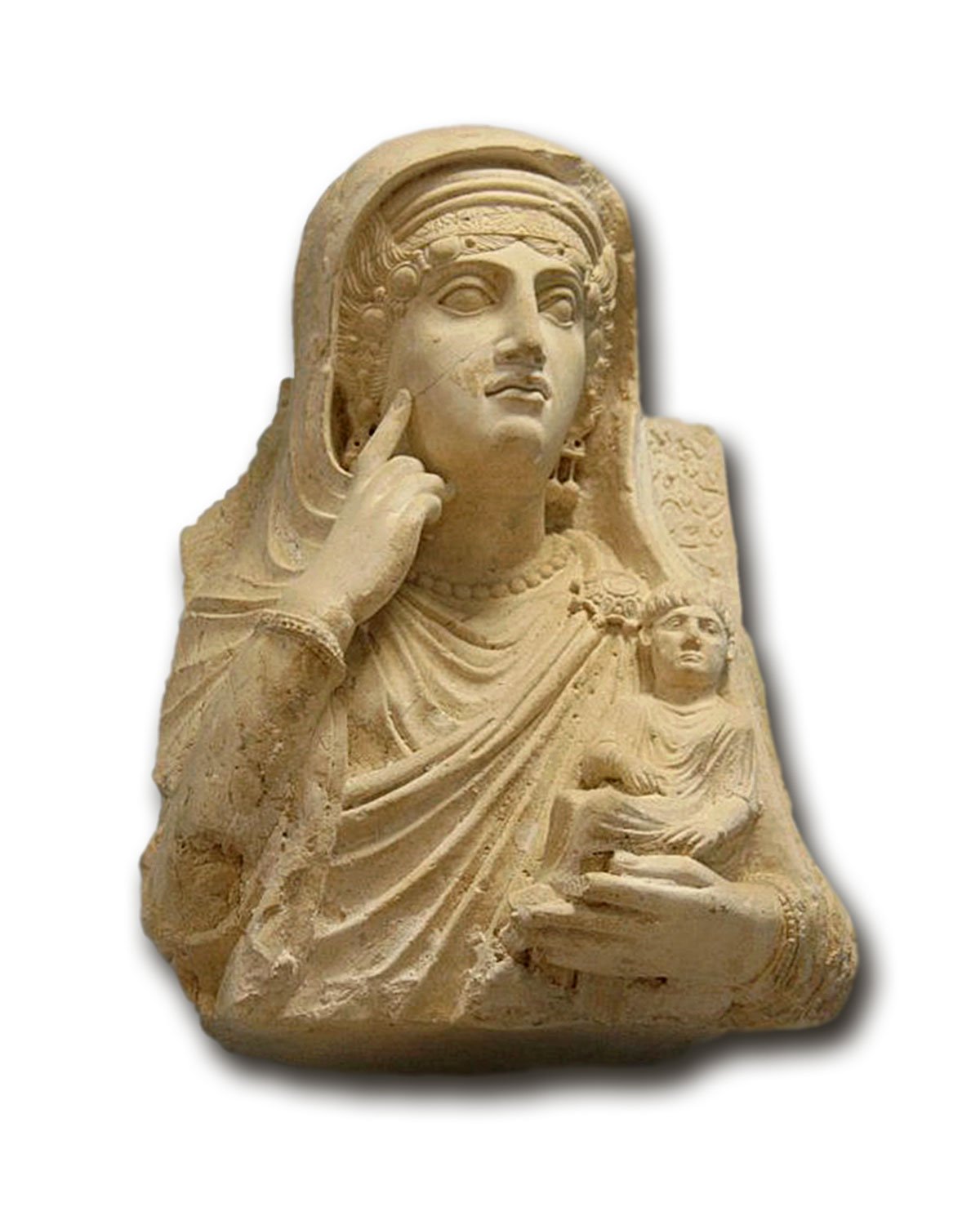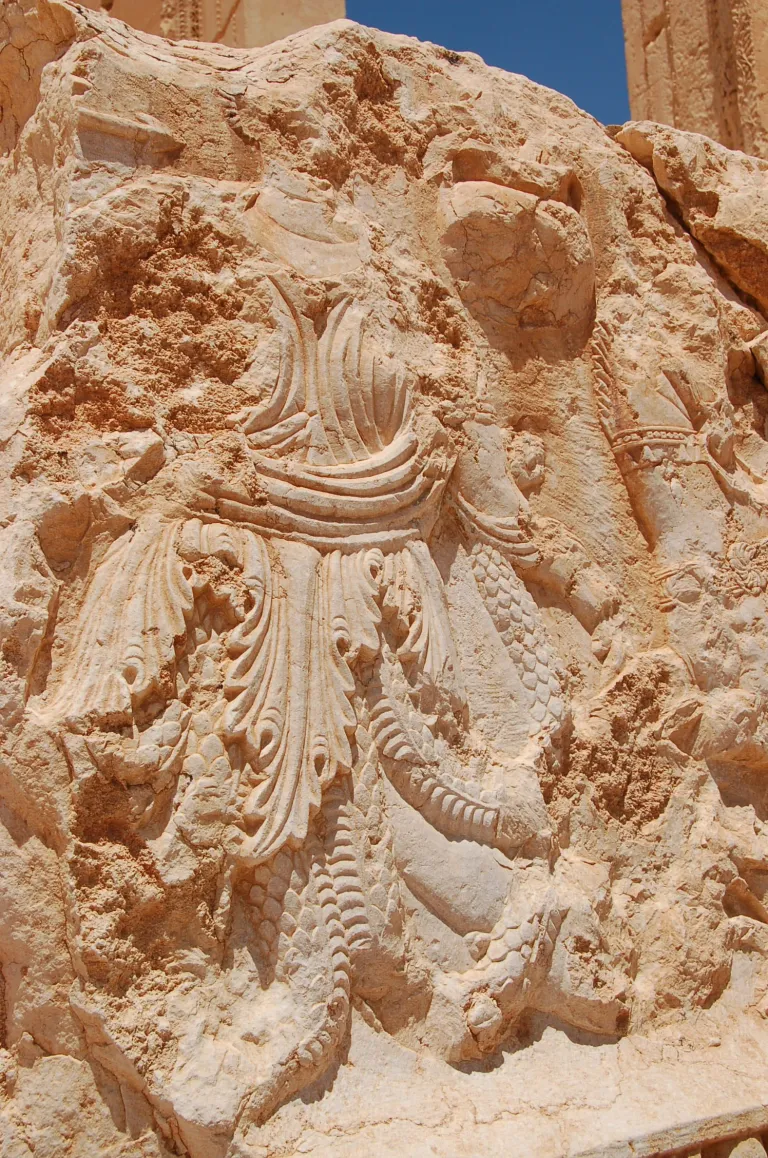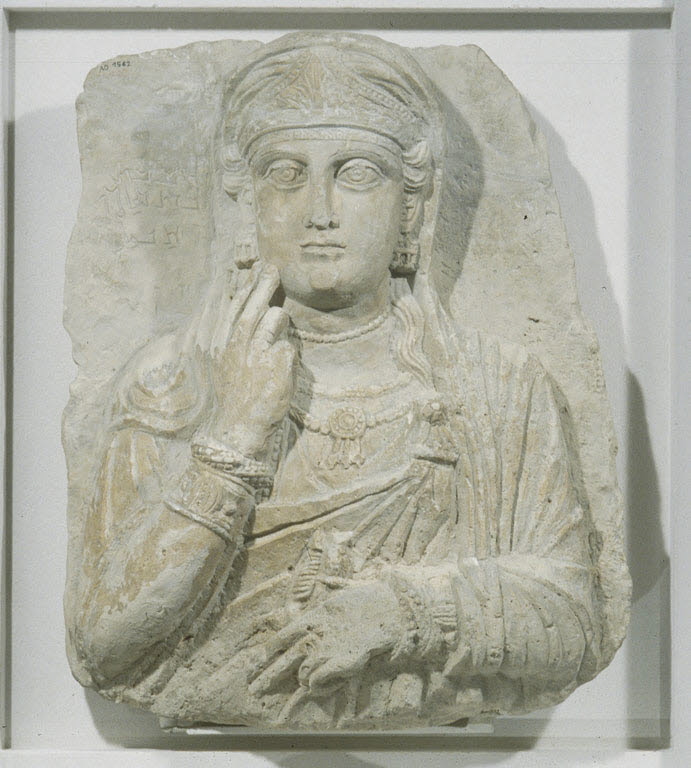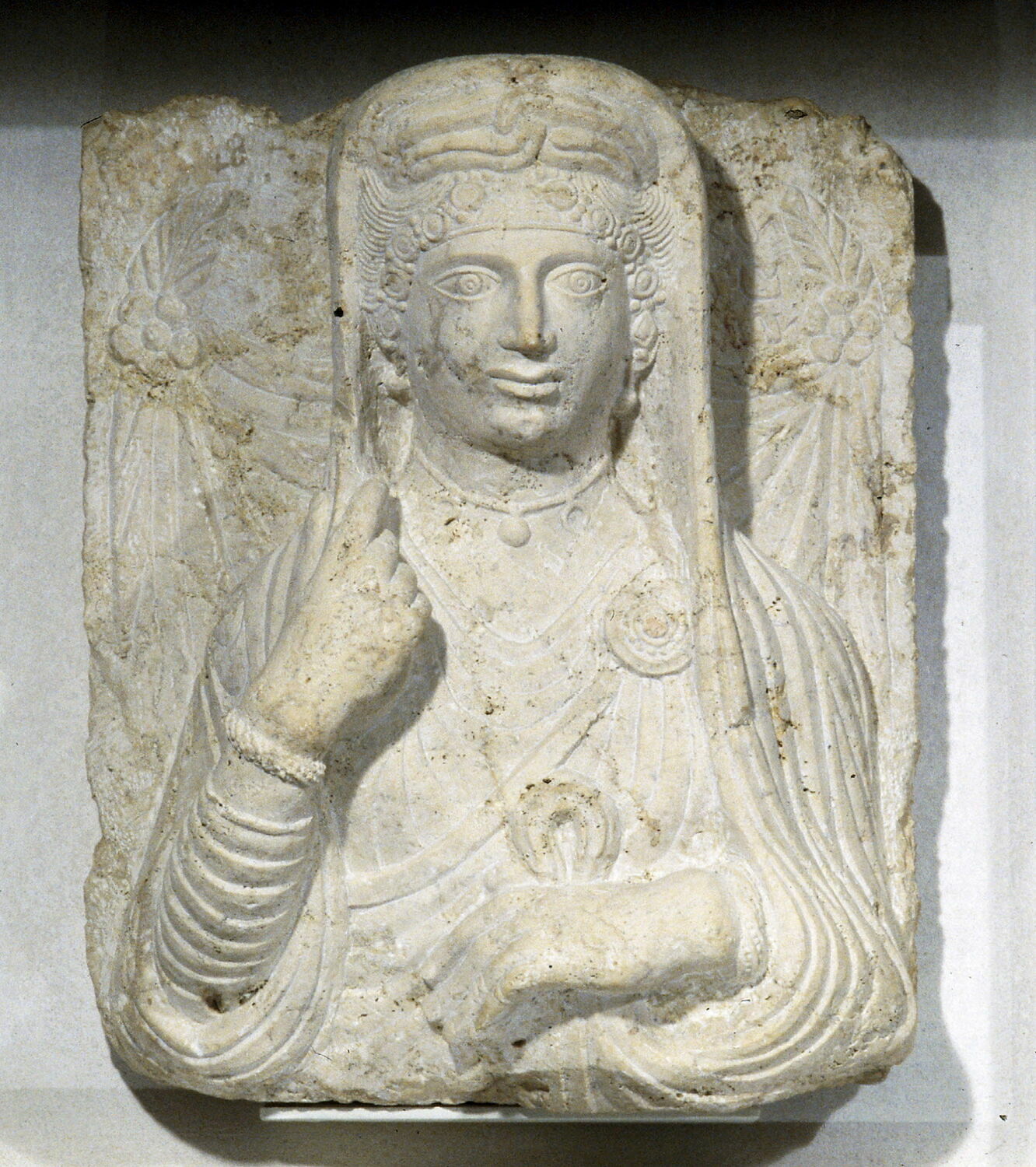There are only a few Palmyra reliefs in which depicted women hold a cup type vessel. The meaning of vessels is uncertain.
Bust of Baaltegâ from the tomb of Artaban, Palmyra, 120-150 CE. According to Jean-Baptiste Yon she is thought to be a priestess [Femmes de Palmyre, J.-B. Yon]
A. Sadurska describes a relief: bust of a woman getting ready for the sprinkling.

Photo taken ca 1923 https://www.ifporient.org

Relief of Aqme and Ninai, children of Nebomi, from the tomb of Yarhai, 140-170 CE.
National Museum of Damascus
Aqma – Robert Amy and Henri Seyrig, Recherches dans la nécropole de Palmyre: I. L’hypogée de Iarhai fils de Barikhi, petit-fils de Taimarsô
https://www.persee.fr
Tomb of Yarhai >> https://www.persee.fr/doc/syria_0039-7946_1936_num_17_3_3908
Relief of mother and son, ca. 150 CE.
In Beirut, American University Museum, inv. no. 33.12.
[Gesture and Identity, Maura K. Heyn]
“By the 2nd half of the 2nd C. AD, male beards had become fashionable. The man on funerary bust (7) also has a mustache. The way the strands of his hair end in the form of shells is peculiar to the Parthian Empire during the Roman period. He is holding a sword in front of a tent that is knotted with nails in the shape of rosettes, indicating that he is the dead. The woman beside him with her arm around him, assumes attributes of a mourner. Her tunic, attached with a circular fibula, is worn at an angle. Her long hair hangs loose reaching her shoulders. She is holding a bowl called skyphos, which contained food eaten on the occasion of a funeral. This composition indicates that this man was well honored after his death.”
[Reine Mady, PALMYRENE Funerary Portrait Reliefs, AUB 2022]
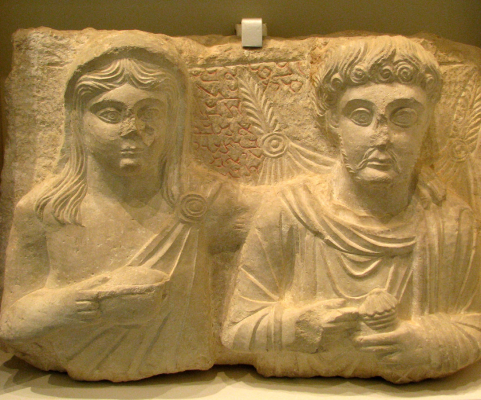
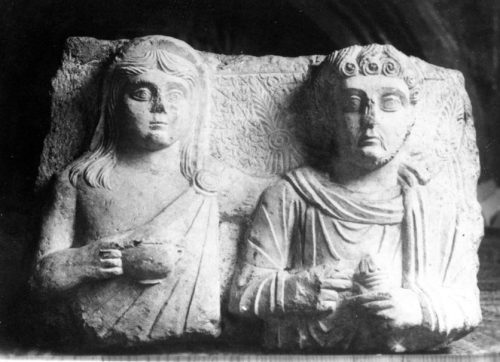
https://medihal.archives-ouvertes.fr/medihal-00783773

Stele of another woman named Baaltegâ, Palmyra.
According to Jean-Baptiste Yon she is thought to be a priestess. [Femmes de Palmyre, Jean-Baptiste Yon]
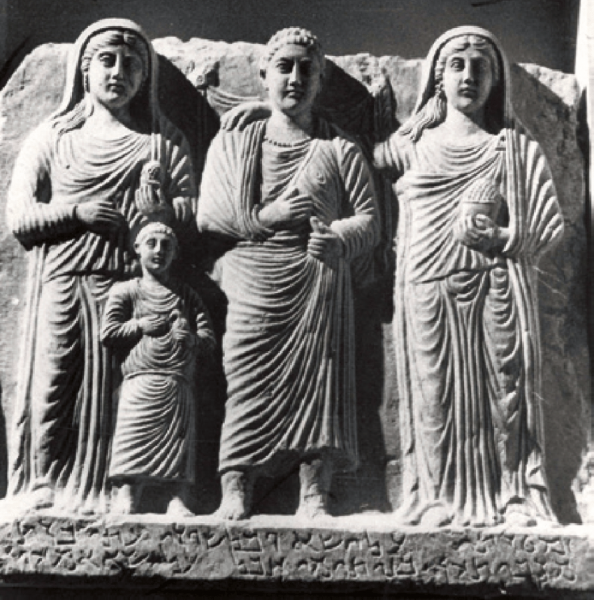
Stele with a nurse, girl and two women, Robert Mouawad Museum, Beirut, 150 CE (Ingholt Archives, PS 1101).
[Representations of Women and Children, Rubina Raja]
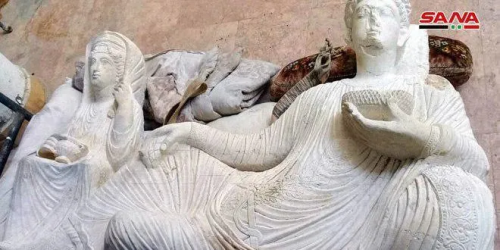

Photo ©Palmyra Portrait Project after E. Cussini
Description from the NY Glyptotek catalog, p. 118: woman holding a skyphos, the lower register is decorated by a tongue pattern, inside the skyphos, a large globular object is rendered.
A surprising interpretation of the vessel is given by Eleonora Cussini. She describes it as the “Pie or leavened bread with almonds or pine-nuts […] inside a small container in the hand of women who accompany and comfort the dead”.
[The Pious Butcher and the Physicians, E. Cussini]
In the MFA Boston collection there is a brass censer of two pieces: a solid bowl and an openwork lid, decorated with the grape leaves and long-tailed birds nibbling at bunches of grapes.
The censer, dated to 5th–6th century, is thought to be made in the Eastern Mediterranean, in Egypt or Syria.
As for the shape and design it is worth to look at the cinerary urns, like the one from Museo Archeologico Nazionale dell’Umbria. It is made of marble in the shape of an amphora. Dated to the 1st century.
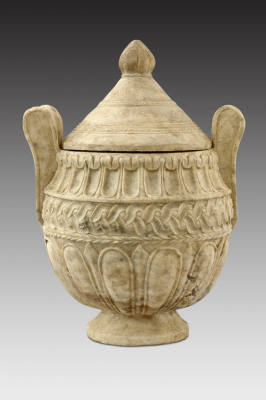

Inv. no. 50.2303a-b
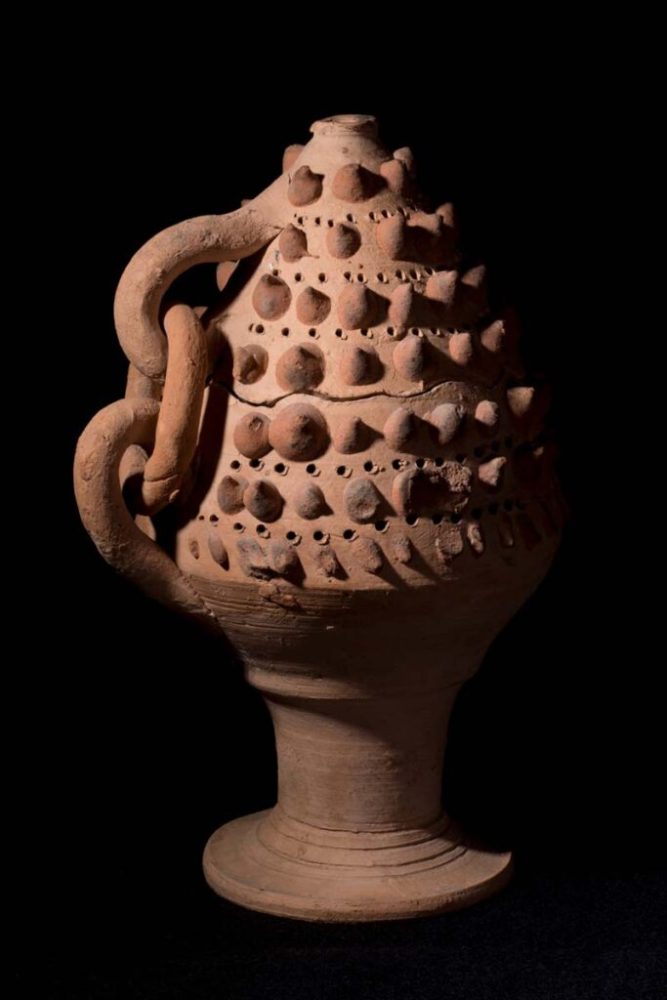
Procession of women (a sacrificial scene)
Archaic relief from the agora that depicts two veiled women in a sacrificial scene (courtesy of the Palmyra Museum).
The woman on the far right holds a two-handled cup, and before her another woman holds what appears to be an incense burner.
Roman Palmyra: Identity, Community, and State Formation; Andrew M. Smith II



carrying torches and bowls
Yale University Art Gallery, inv. 1932.1201
“The Christian building at Dura-Europos is the world’s earliest known house-church. The most elaborate and ritually significant room in the building was the baptistery, where Christians welcomed members into their community through the sacrament of baptism. In this wall painting from the baptistery, which survives in three fragments (from left to right, 1932.1201a–c), several elegantly dressed women carry torches and bowls in procession. Additional fragmentary figures from the north and east walls indicate that there were originally ten women depicted, moving from right to left through the space just as the initiates would have done. What they approach is unclear—possibly the empty sepulcher of Christ on Easter morning, or the tent of the heavenly bridegroom, adorned by two stars, perhaps representing angels. Located next to the baptismal font, the scene instructed initiates that they were entering into a new spiritual relationship with God.” https://artgallery.yale.edu
Real examples of vessels

“This beaker-like vessel probably served as an altar lamp. It was filled first with water and then with oil and then fitted with a dock attached to a float. The inscription round the circumference names a Roman official by the name of Sergius as the donor. He had the lamp made in honour of a vow for himself and his family. Offerings of this kind were given to the church as a token of thanks for having been saved from adversity.”
Syria (Antioch), 574–578, silver gilt, embossed, niello, h. 14.5 cm, inv. no. 8.114.64 © Abegg-Stiftung [source]
- Femmes de Palmyre, Jean-Baptiste Yon
https://www.cairn.info - L’ art et la société. Recherches iconologiques sur l’art funéraire de Palmyre, Anna Sadurska, 1994
http://archiv.ub.uni-heidelberg.de/propylaeumdok/2607/ - https://www.academia.edu/resource/work/31928164
- Femmes de Palmyre, Jean-Baptiste Yon Representations of Women and Children in Palmyrene Funerary Loculus Reliefs, Loculus, Stelae and Wall Paintings; Rubina Raja
https://www.researchgate.net - Gesture and Identity in the Funerary Art of Palmyra Maura K. Heyn
- The Pious Butcher and the Physicians. Palmyrene Professions in Context, in T. Long and A. Højen Sørensen (eds.), Positions and Professions in Palmyra, 2017, Eleonora Cussini
https://www.academia.edu - The World’s Oldest Church: Bible, Art, and Ritual at Dura-Europos, Syria; Michael Peppard 2016
- The Brides of Christ: ‘The Women in Procession’ in the Baptistery of Dura-Europos; Sanne Klaver 2013 https://www.academia.edu
- The participation of Palmyrene women in the religious life of the city; Sanne Klaver 2019
https://www.academia.edu
[procession of woman from Palmyra relief] - New perspectives on the ritual and cultic importance of women at Palmyra and Dura Europos: processions and temples.
Cynthia Finlayson; Studia Palmyreńskie 2013 https://www.ceeol.com/search/article-detail?id=8344 - Aleksandra Kubiak-Schneider. Women in the votive dedications from Palmyra. Archimède : archéologie et histoire ancienne, UMR7044 – Archimède, 2021, Archimède. Archéologie et histoire ancienne, 8, pp.54-64. https://halshs.archives-ouvertes.fr/halshs-03279650/document
- Roman Palmyra: Identity, Community, and State Formation; Andrew M. Smith II [procession of woman from Palmyra relief]
- Reine Mady, PALMYRENE Funerary Portrait Reliefs, AUB 2022





